The story behind the environmental work Huoma, as told by the artist
Satu Suvanto
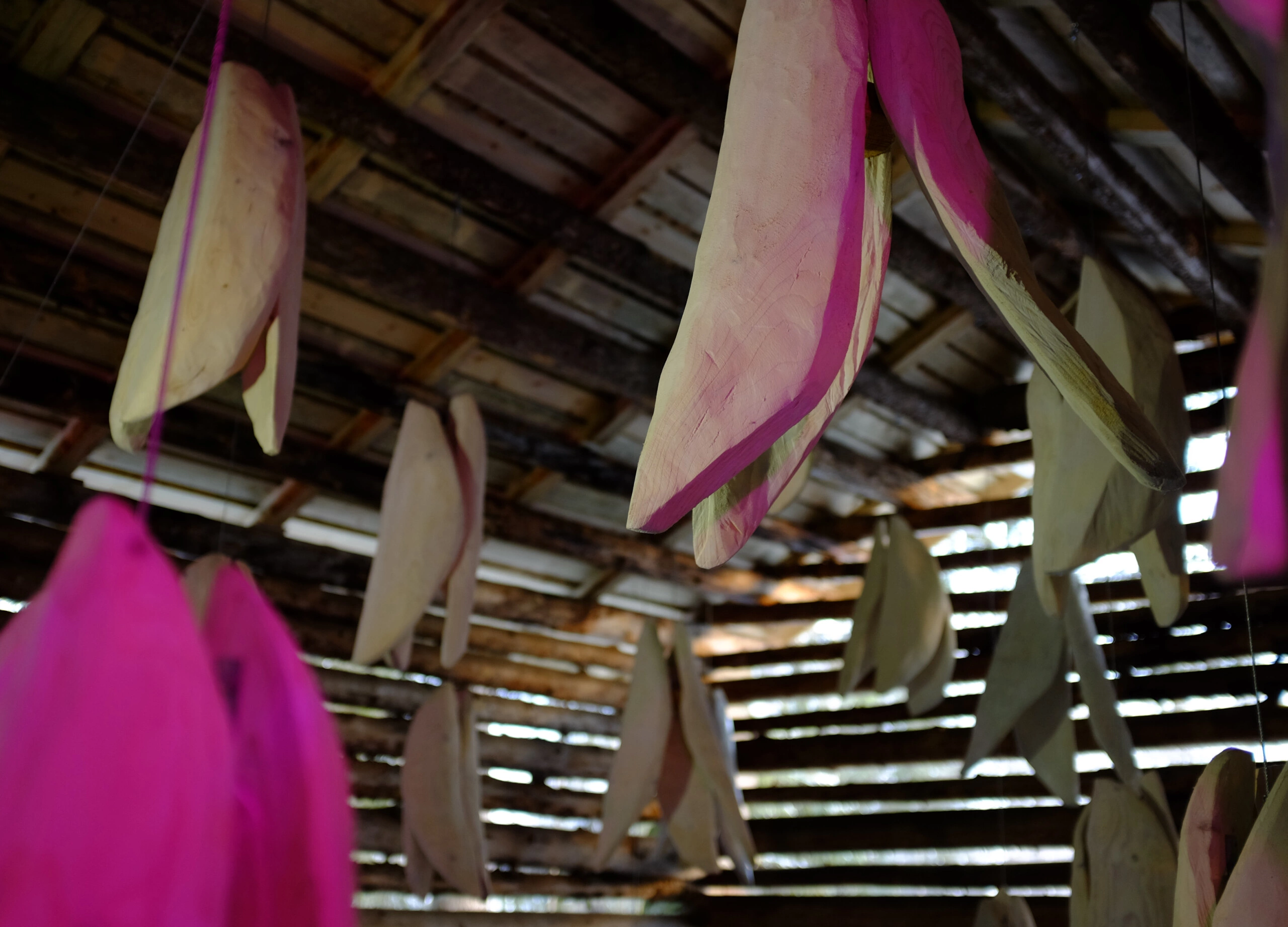
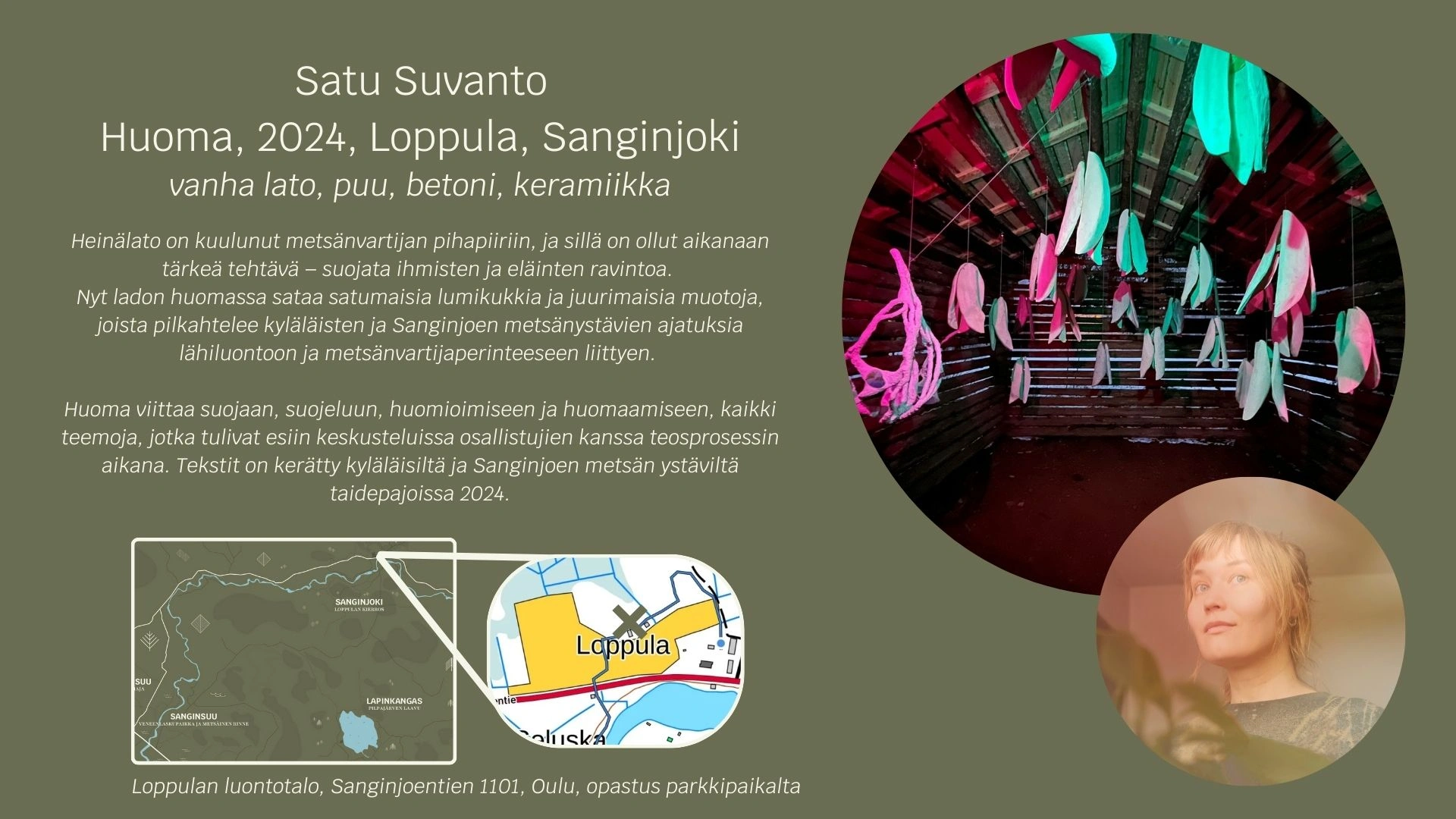
In the shade of trees covered in beard lichen stands a barn restored by volunteers. It was an outbuilding in the forest ranger’s farmyard that once served an important function: to protect food for people and animals. There used to be a winnowing machine in the corner of the barn, a hand-cranked device used to separate chaff from grain. Now the barn houses a work of environmental art, which offers a glimpse into the memories of the local people and their views on nature and the traditions of forest rangers. This text describes how the work came to be, as told by the artist.
Exploring the traditions of forest rangers and a huge sawing job!
The Loppula barn immediately stood out as a site for my work: I love the forests in Sanginjoki and often visit the area, to pick berries, sit by a fire or simply enjoy a hike through the trees. When I first visited the barn, my attention was caught by the beautifully greyed wall logs, the lichen-covered trees and the silence. I began to learn more about the area’s history and the traditions of the forest rangers.

The hay barn was part of the forest ranger’s yard. Forest rangers had a crucial job in supervising the use of the area. The Loppula farm was an important meeting place, and people also came here for advice, such as the best places to pick berries – though not everyone was let into the secret of where the best areas for cloudberries were located.
I arranged to meet villagers and friends of the Sanginjoki forest and learned more about the traditions of the forest rangers. The villagers have a huge amount of knowledge about local traditions and the environment, and I learned new things from every meeting. It was invaluable for me to meet villagers and hear their thoughts, and to see what great things had been achieved in Sanginjoki by volunteers. A good example is the barn itself, which has been renovated and now has a lovely wooden shingle roof.
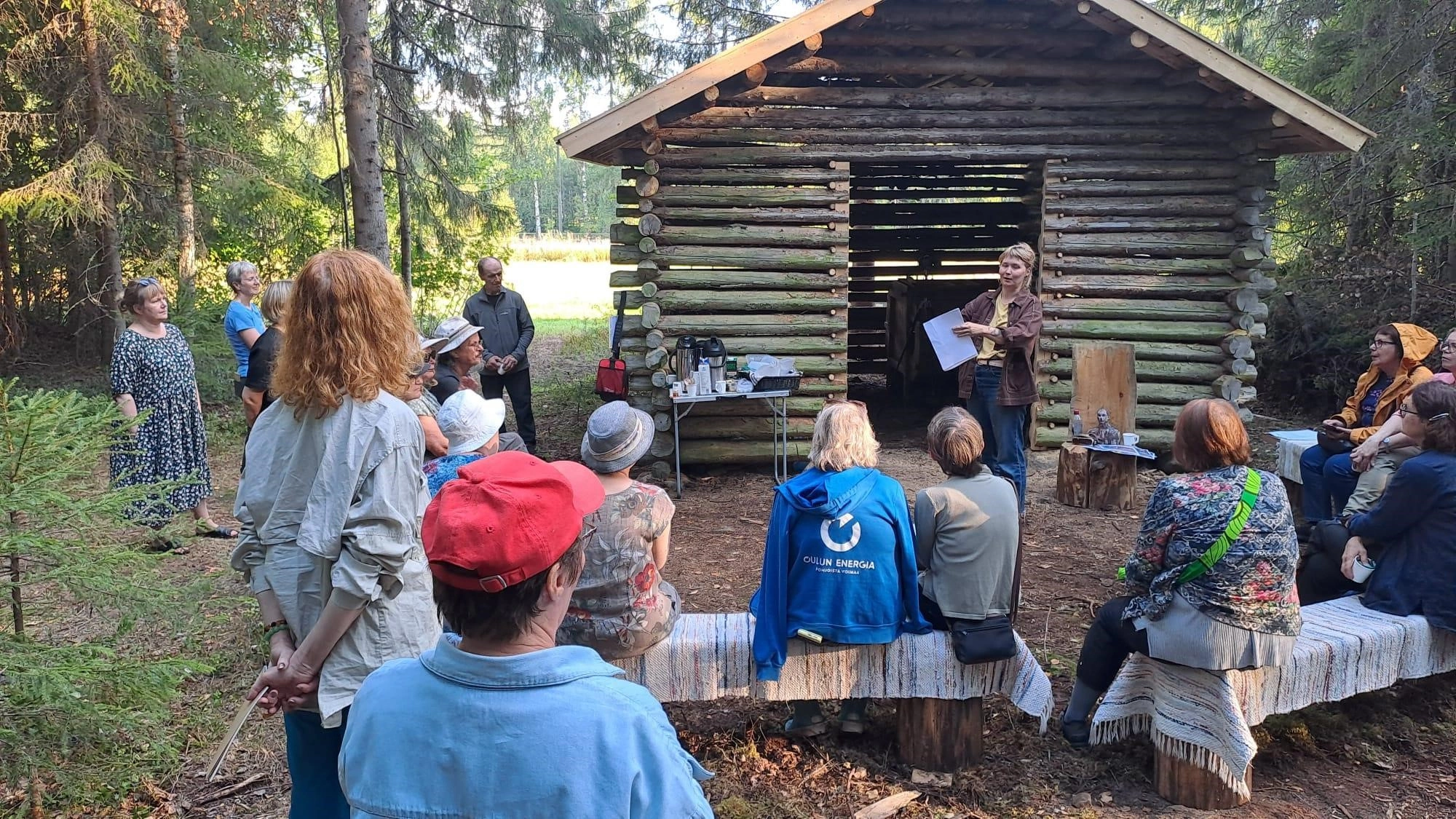
As I learned more about forest rangers, I felt a certain mood starting to emerge. The rangers have a deep knowledge of their forests; they notice any changes in the environment and even the smallest miraculous details. They share information and, of course, monitor that no illegal activities take place. I wondered how I could get to know and feel the forest. How could I approach the forest like a forest ranger and what elements of that experience could I bring to my work process?

Forest rangers used to supervise the work carried out by loggers, so it seemed appropriate to choose wood as the main material for my work. A suitable tree was found in my father’s back garden in Tupos, and we cut it down together. I was lent a pair of logger’s boots found at the Loppula farm. They were three sizes too big for me, but I wore them to bring me good luck! Perhaps it was the boots that initially gave me the idea of trying to figure out how a forest ranger would carry out the different stages of the job in the most sustainable and responsible way.
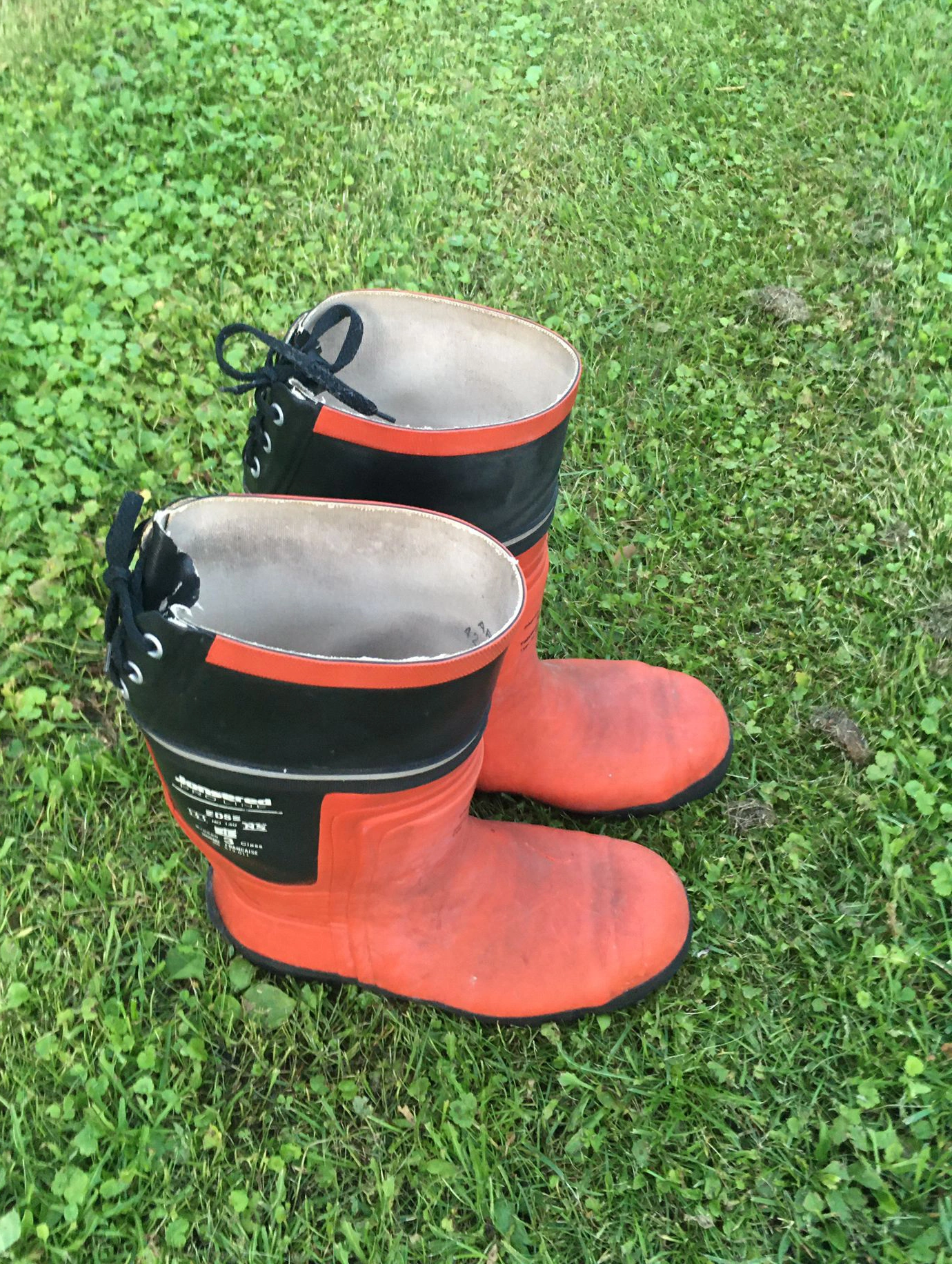

I think, when you know exactly where the material for a work of art comes from and are involved in collecting it, it automatically makes you appreciate and care for that material, so you make sure it is used in a sustainable way. This is reflected in my work: for example, we collected the sawdust to make hibernation nests for hedgehogs, and I used all of the tree for the 84 petals I carved for the flowers that hang from the barn ceiling.
There was a lot of excitement in every step of the process, and sawing the tree was quite a job! You need to be sensitive when working with natural materials, and it is also a lesson in humility. The grain, knots and air humidity are all elements that need to be considered when working. I was especially careful to let the wood dry in as airy a space as possible, so it would not go mouldy in autumn. I found a suitable space in the roof of a shed, where I left the petals to dry.
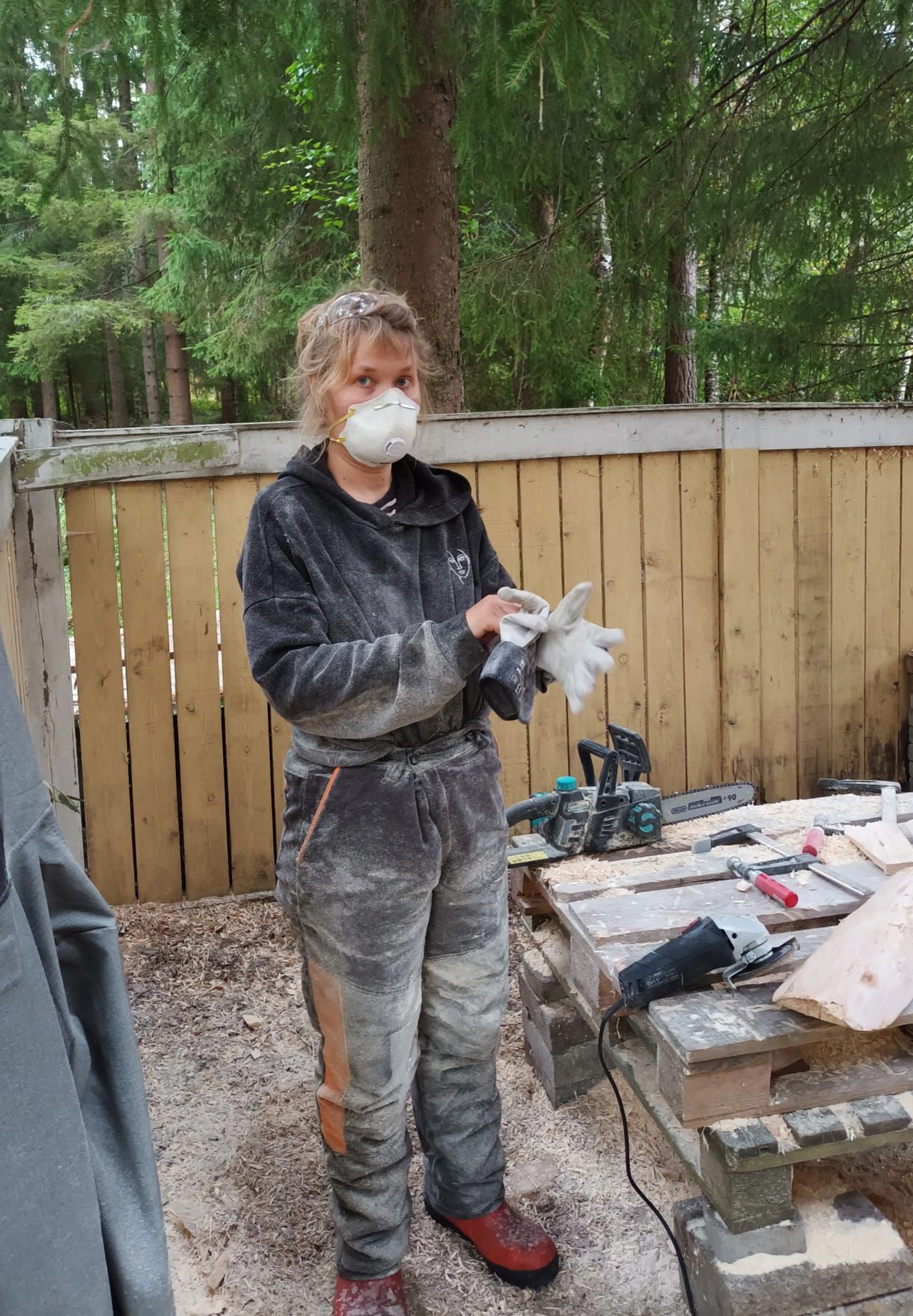

Wonderful encounters at art workshops in the barn
It was clear to me from the start that I wanted to hold art workshops at the barn related to the theme of my work. The villagers have precious memories of the local environment and the traditions of the forest rangers, and I wanted to include some of them in my work. I held two workshops at the barn. Participants put up frames to highlight details around the barn that they wanted others to notice, and these were left up as a temporary art exhibition. One participant framed the surface of a stone, another a lichen-covered branch and someone else a small mushroom. Golden frames of various sizes filled the barn’s surroundings for a while and served as invitations to explore the wondrous details of nature.

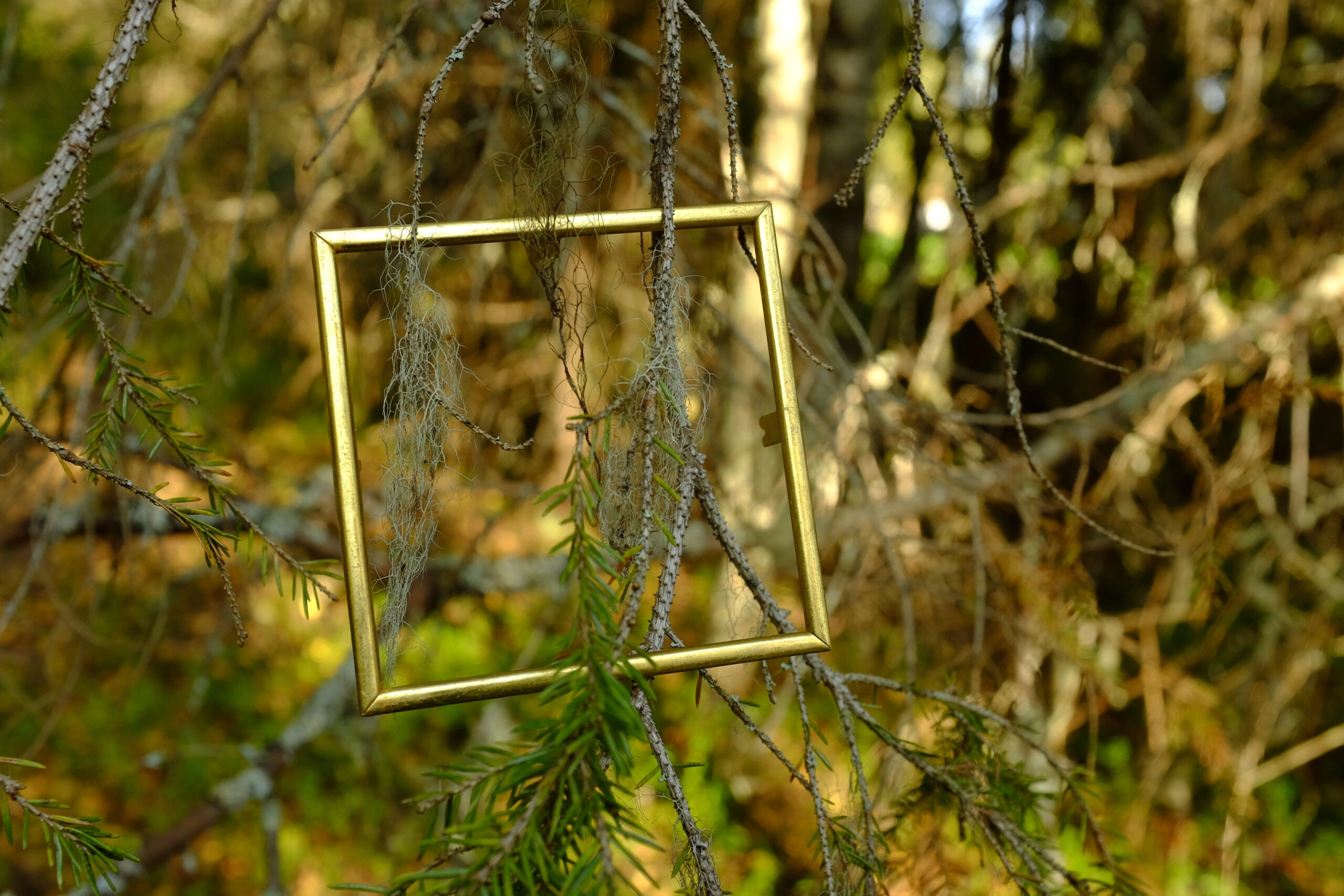
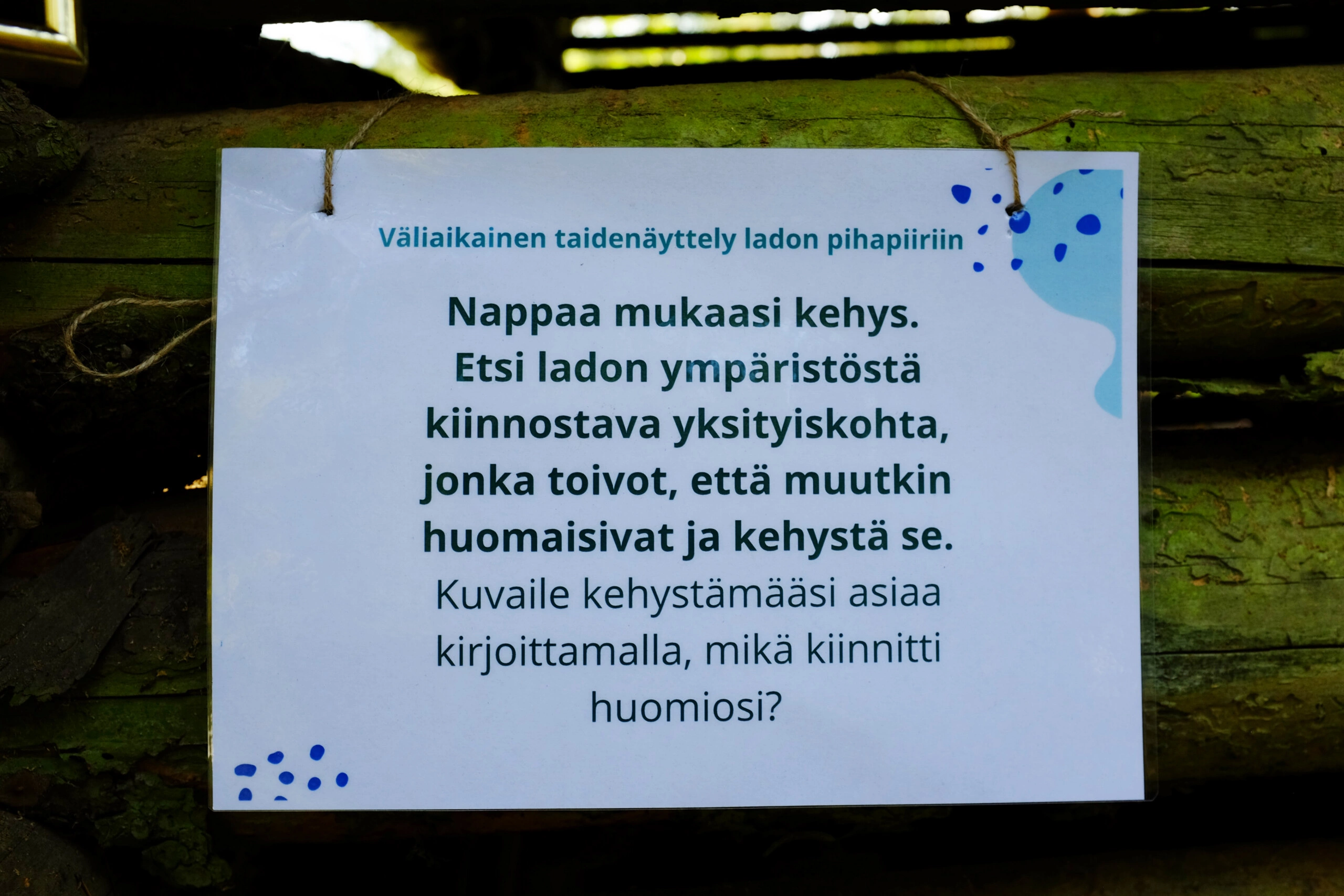
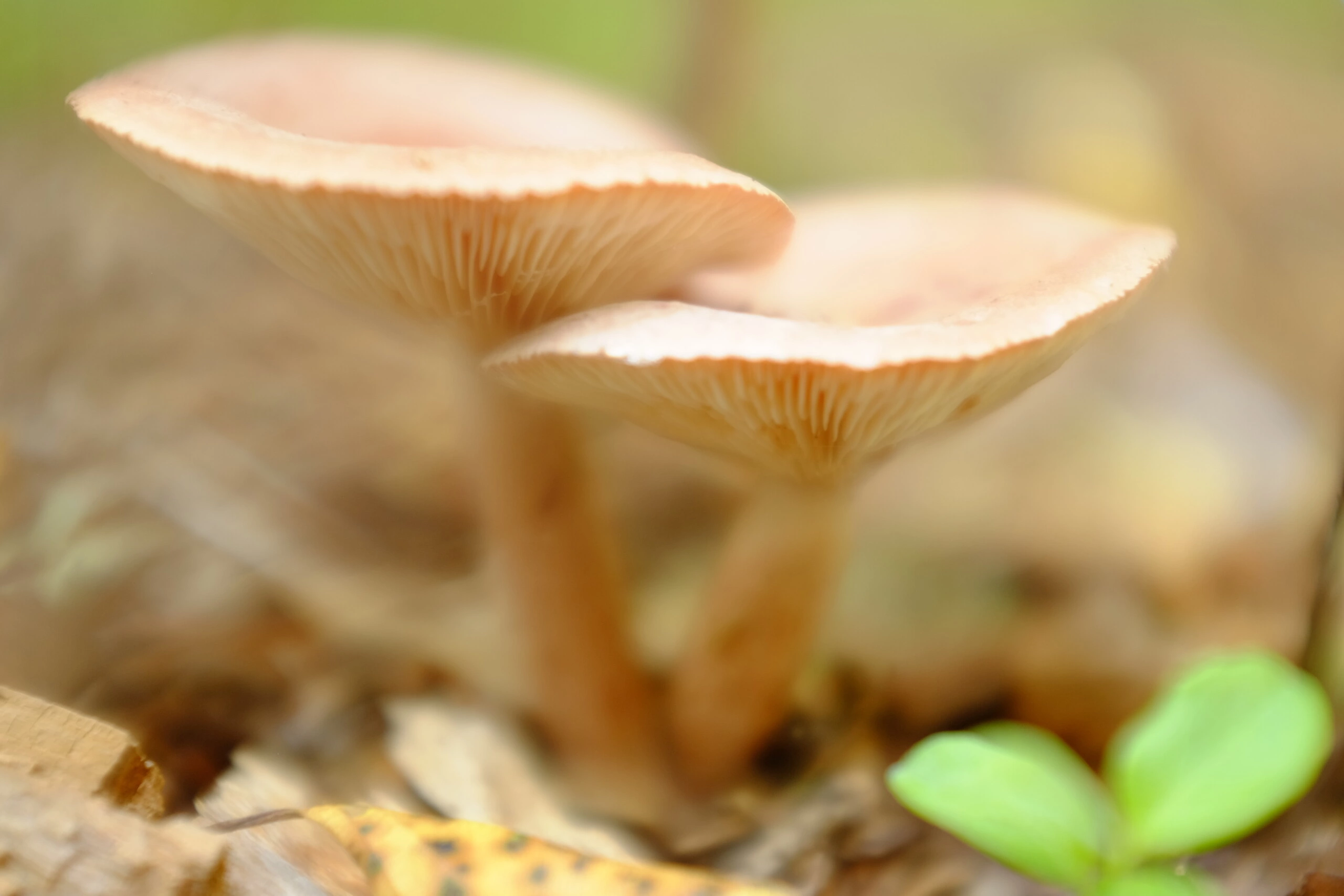
After the framing, participants focused on creative writing tasks in the shade of the trees and hung their writings on a washing line fixed to the barn wall. The texts conveyed the importance of the local nature, the meaningful moments spent there and the memories made.
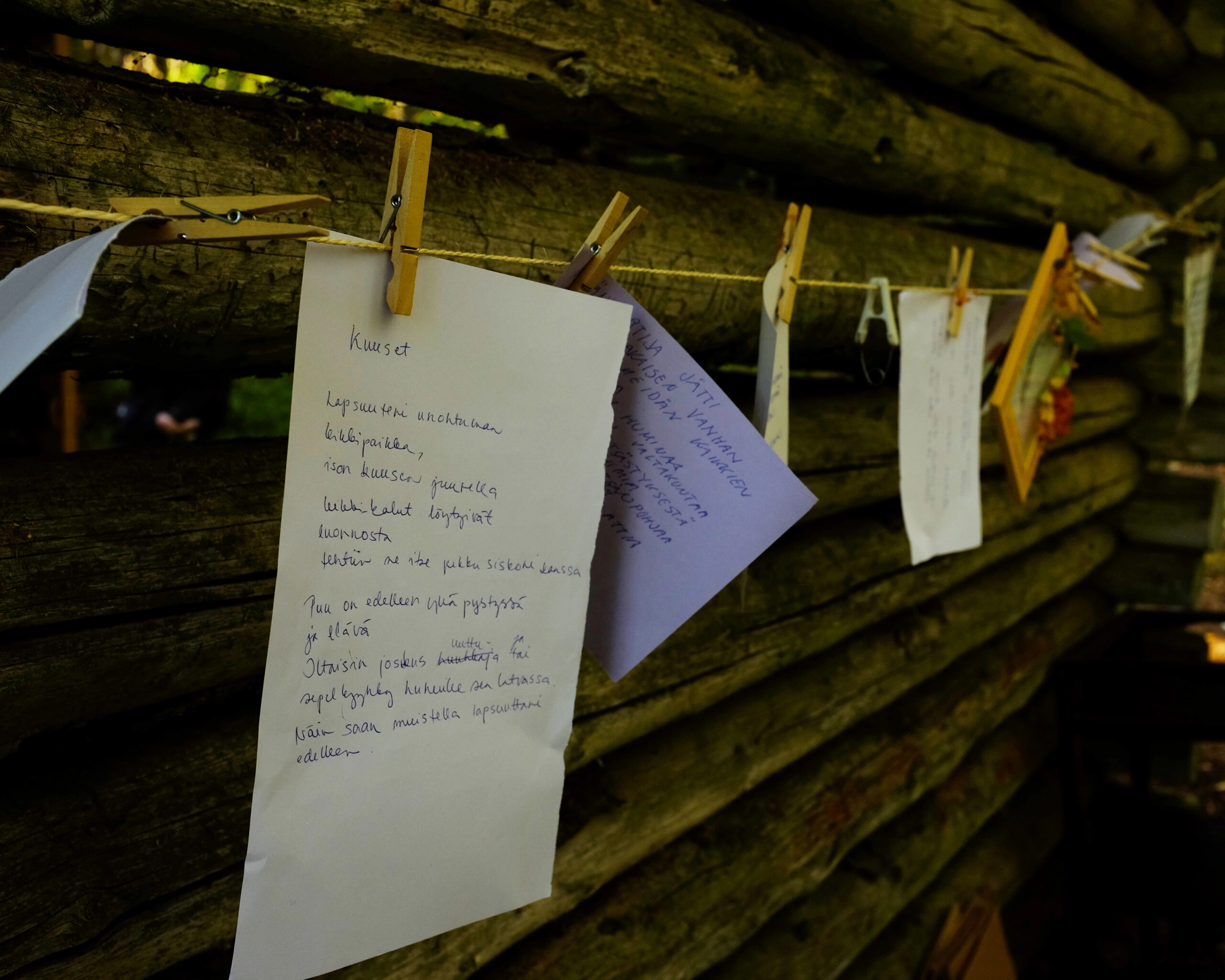
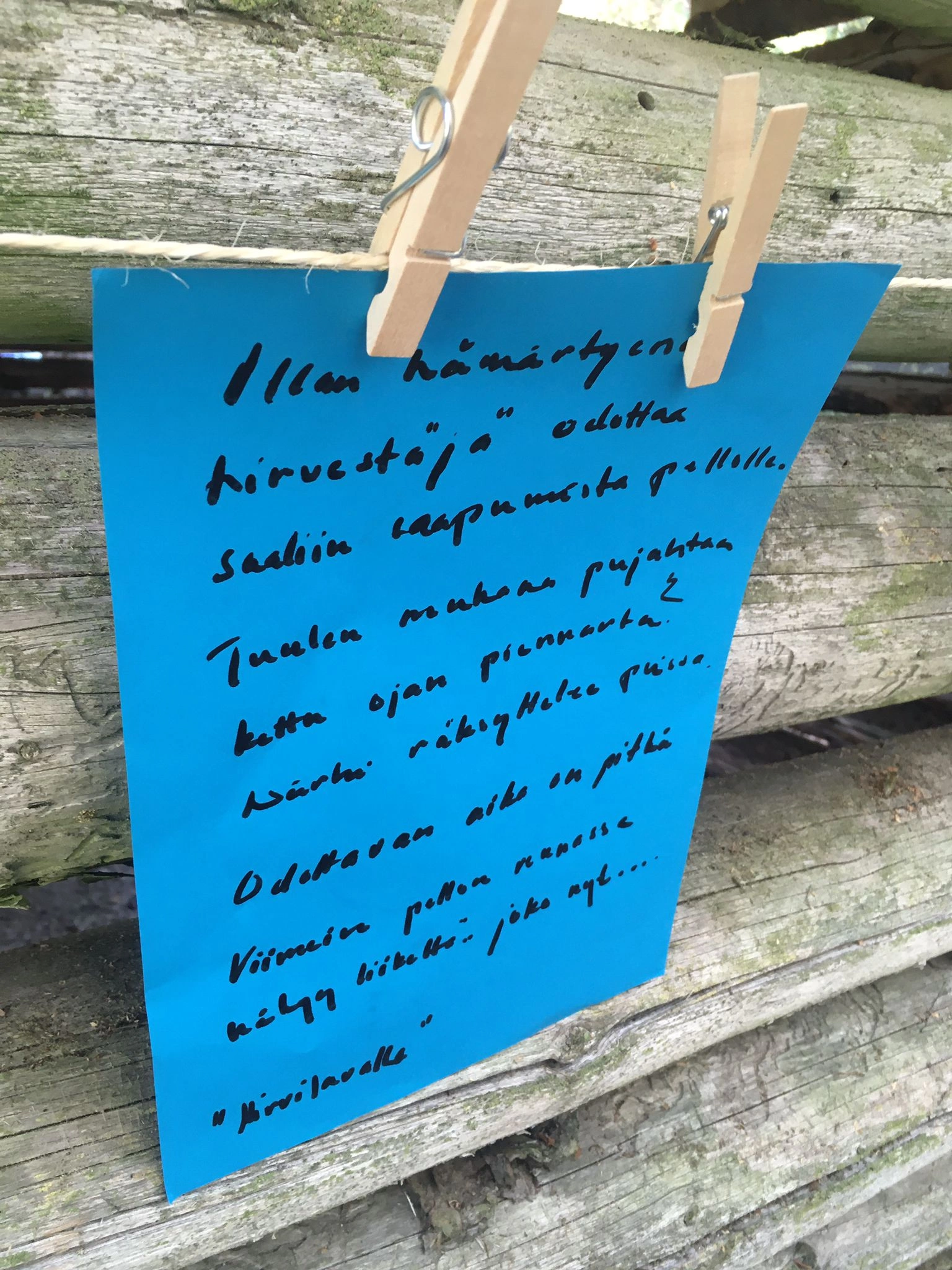
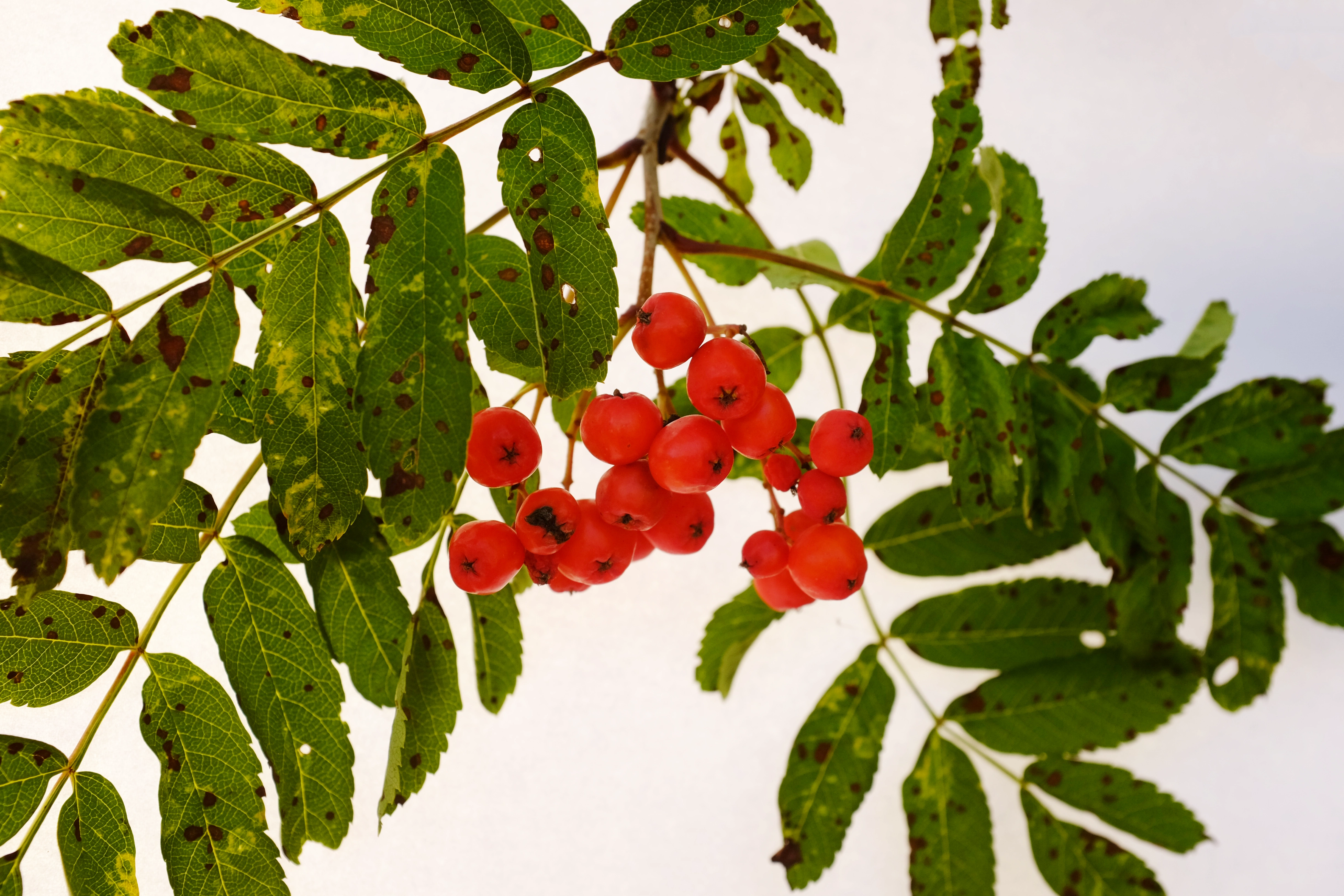
I took photos of the framed details and read through the participants’ touching texts, processing some of them to transfer onto clay. Printed on ceramic, they became part of my work. I added the ceramic elements to the concrete sculptures, which look a bit like root systems among the floating flowers. The glimmering rowan that appears in the work is the one found behind the barn. The mushroom is one framed by an art workshop participant. I took the picture of the cloudberry on the shore of the pond.
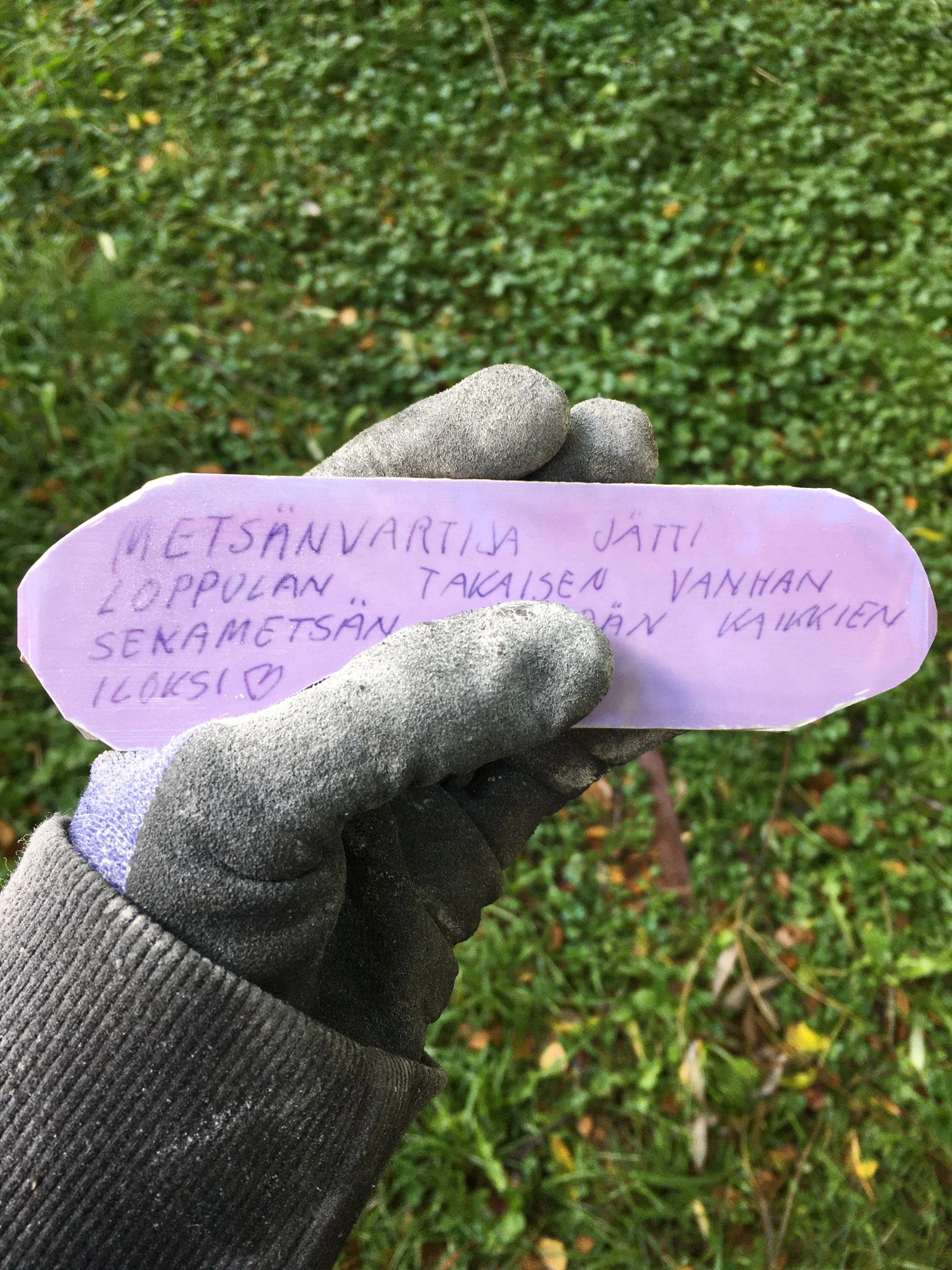
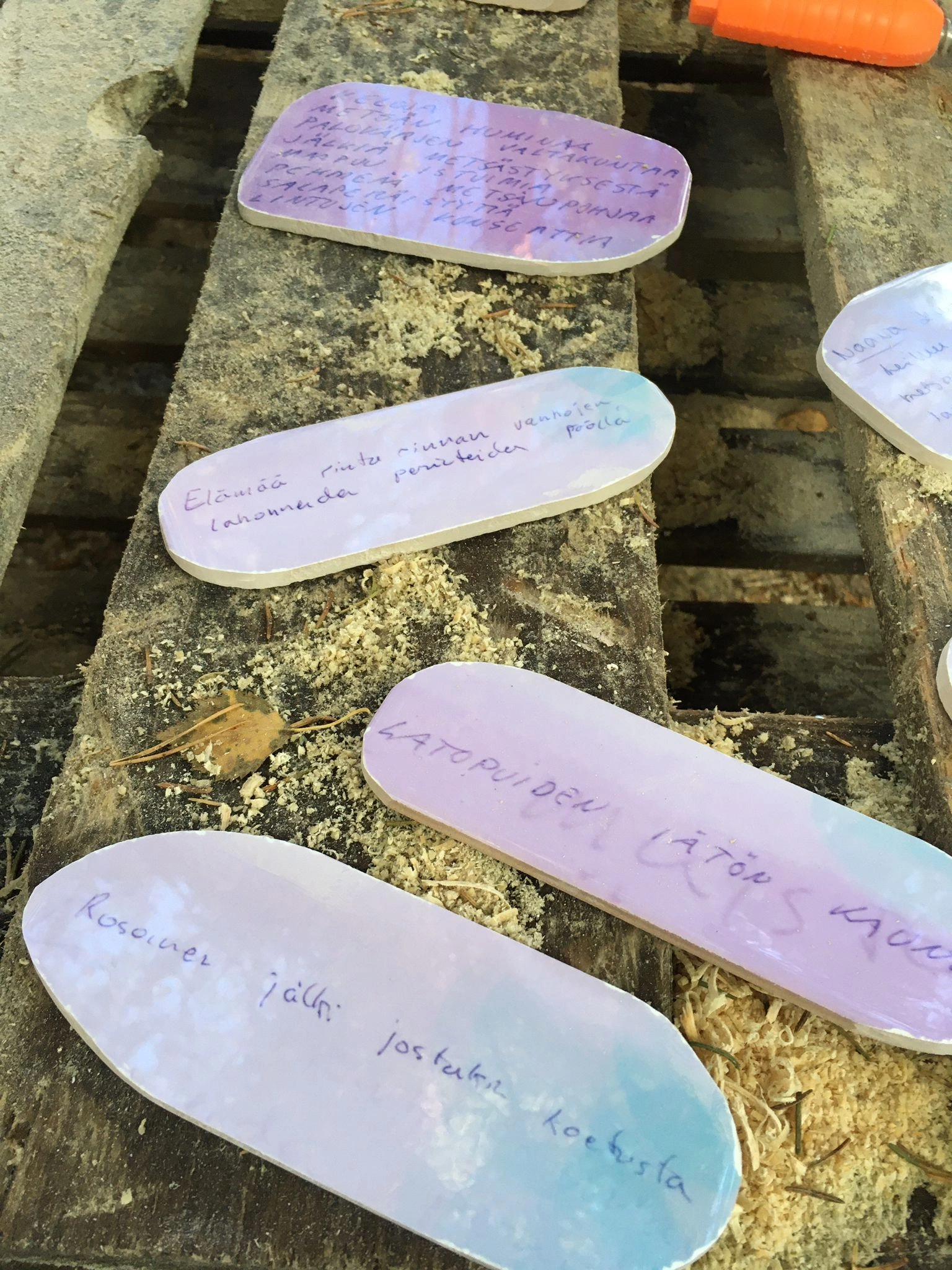
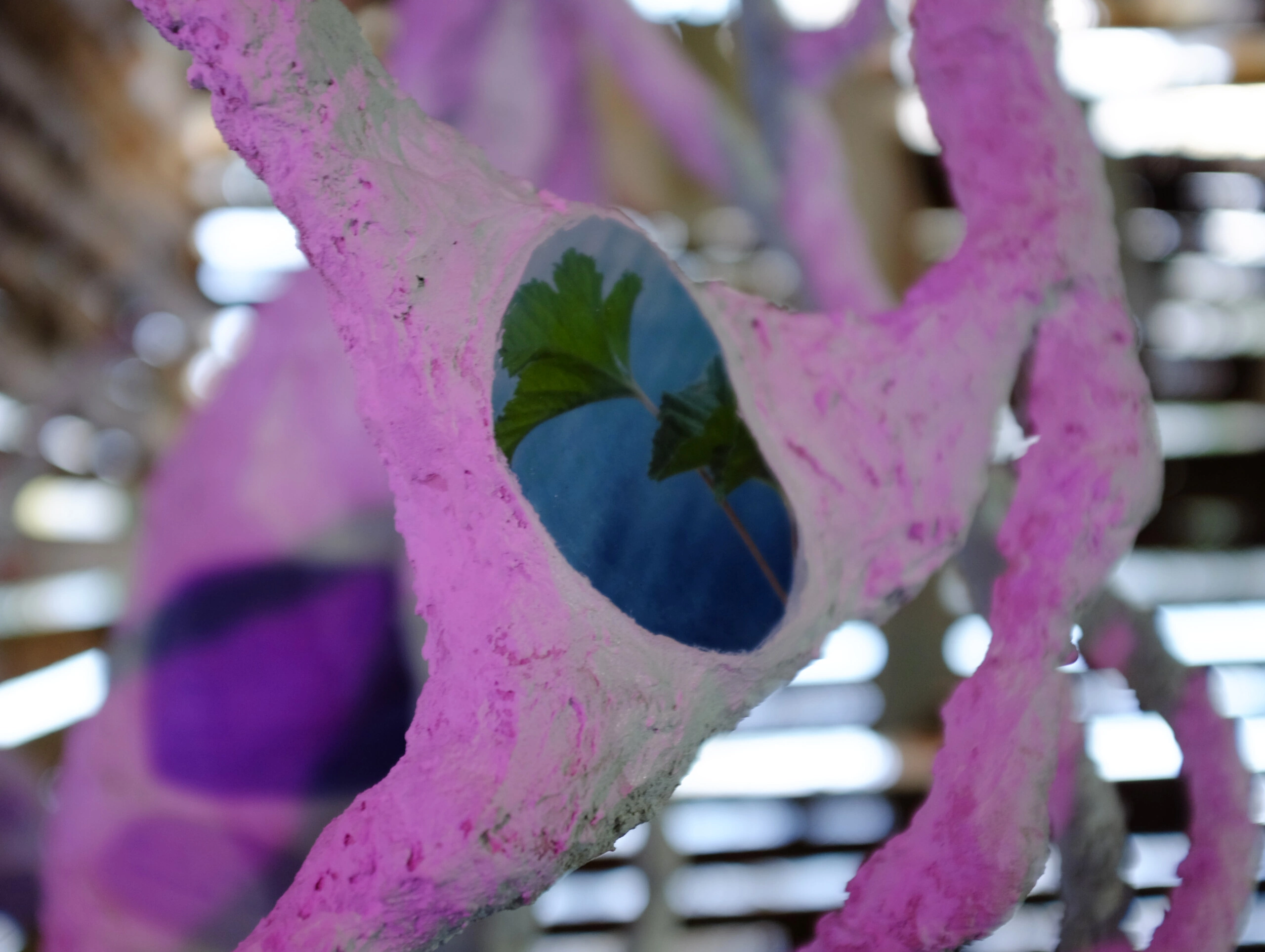
The work is built and named
“Were we all forest rangers – protectors who ensured that the forest would be there forever?” a participant wrote.
The subject for the piece – snowflowers hanging from the barn ceiling – came to me quickly at the very beginning of the process. They were inspired by meadow plants that were stored in barns for animal feed. The root-like shapes among the flowers also remind me of moose antlers – there used to be a hunting stand near the barn, a fact brought up by many of the participants.
I wanted the expression to be rough and delicate, and for the implementation to be implicit so as to leave room for interpretation. Above all, I wanted the work to quietly convey a certain atmosphere, to arouse wonder and give the space a fairy-tale character.
The title of the work, Huoma, was inspired by conversations I had at the art workshops. Huoma refers to protection,safety and noticing, all elements that came up in the conversations and encounters with the villagers and friends of the Sanginjoki forest, and that I hope my work also manages to communicate. The forest protects us, but we can protect the forest in return.
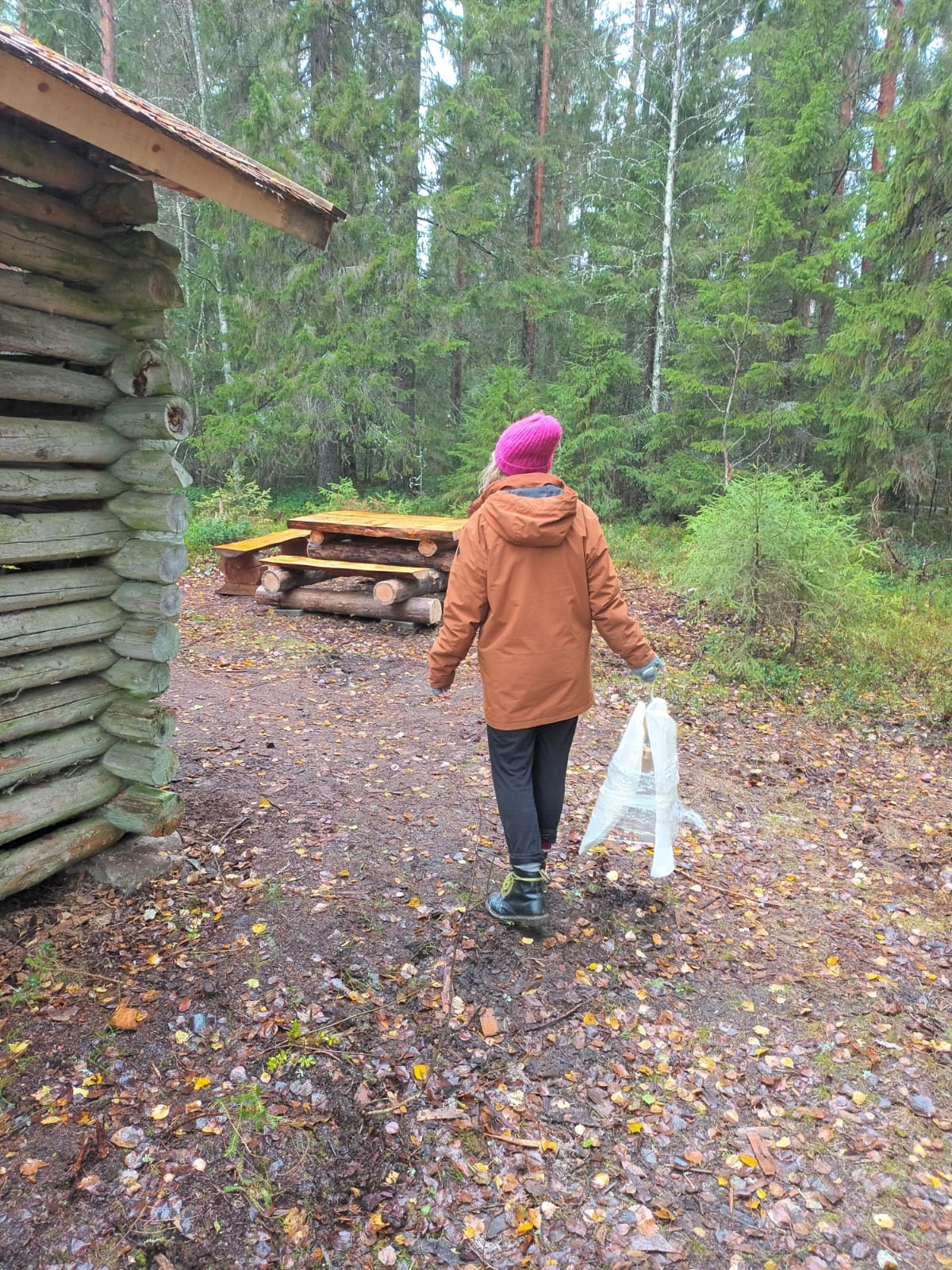
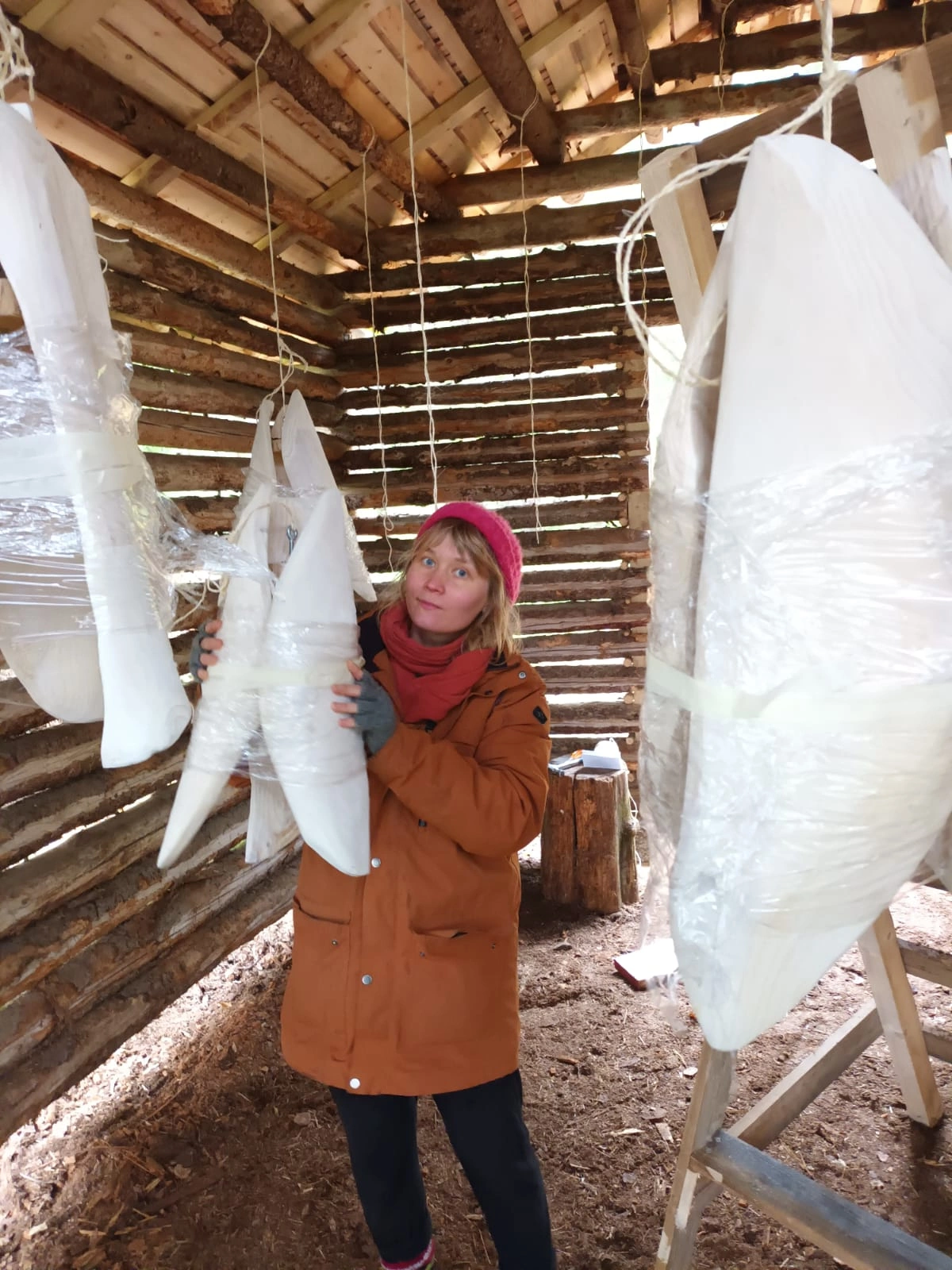
It was great to see how the spatial artwork began to emerge in the barn!
The organisers of the Sanginkontu art trail

We would like to thank all our sponsors and supporters

